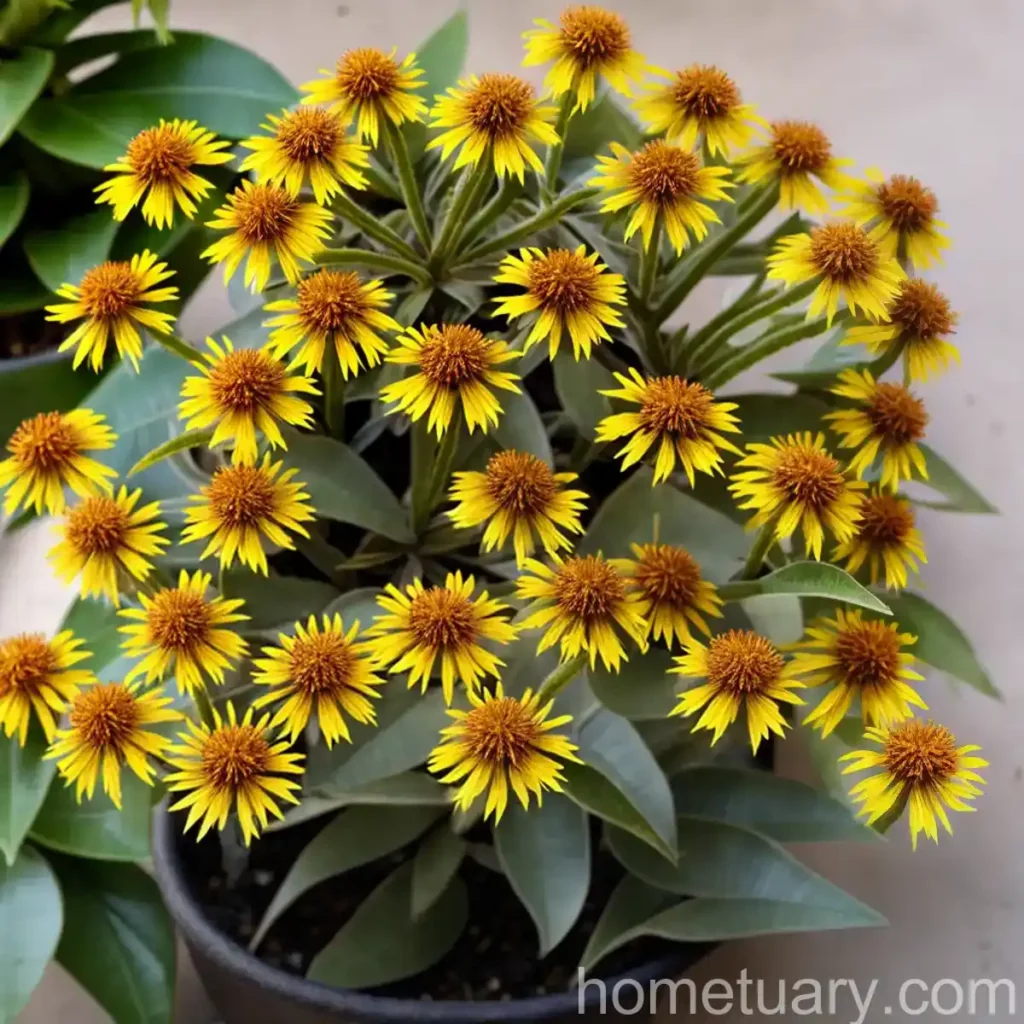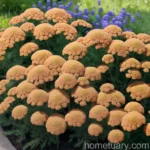Gum Plant (Grindelia lanceolata): A Comprehensive Guide
Introduction
Plants have been an integral part of human life for centuries, providing sustenance, medicine, and beauty. Gum plant, scientifically known as Grindelia lanceolata, is one such invaluable botanical specimen, celebrated for its diverse medicinal properties and ornamental appeal. In this extensive guide, we will delve into the various facets of the gum plant, from its cultural significance to its uses, propagation, care, and potential diseases and pests that may affect it.
What is Gum Plant (Grindelia lanceolata)?
Grindelia lanceolata, commonly known as gum plant, is a flowering perennial plant belonging to the Asteraceae family. Indigenous to North America, particularly the western regions, gum plant is renowned for its exquisite yellow flowers and its potent medicinal attributes. It has been traditionally employed by indigenous communities and herbalists for treating respiratory issues, skin conditions, and various other ailments.
Key Takeaways – Gum Plant (Grindelia lanceolata)
Before delving into the intricate details, let’s summarize some essential points related to gum plant, Grindelia lanceolata:
- Grindelia lanceolata plant is a flowering perennial species native to North America, celebrated for its therapeutic properties.
- The gum plant offers a myriad of benefits, including relief from respiratory ailments, skin conditions, and insect repellent.
- It possesses distinct properties, making it favorable as a natural remedy for a variety of health issues.
- Gum plant is versatile, finding applications in herbal medicine, traditional remedies, and sustainable farming practices.
- Its folklore and traditions are deeply rooted in the indigenous uses and historical significance within Native American communities.
Now, let’s explore the various aspects of the gum plant in detail.
Culture
Understanding the cultural significance of the gum plant is crucial in appreciating its historical uses, traditional folklore, and indigenous applications. Culturally, the gum plant holds immense value as it has been integral to Native American communities and traditional medicine systems. Its folklore and myths further contribute to its cultural relevance, making it an emblem of resilience and natural healing.
Uses
Medicinal Uses
- Respiratory Health: Grindelia lanceolata is particularly renowned for its role in supporting respiratory health. It has been traditionally used as a natural expectorant, making it effective for cough relief, asthma, bronchitis, and other respiratory infections.
- Skin Conditions: The gum plant also exhibits anti-inflammatory properties, making it beneficial for alleviating skin conditions such as eczema, dermatitis, and rashes.
- Wound Healing: Its natural wound healing properties have been recognized since ancient times, promoting the recovery of cuts, bruises, and minor injuries.
- Other Therapeutic Benefits: Gum plant is also known for its potential to relieve sore throat, treat allergies, and support cold and flu management.
Ornamental Uses
Apart from its medicinal significance, the gum plant also serves as an ornamental plant, enhancing the aesthetic appeal of gardens, landscapes, and floral arrangements.
Water
Gum plants prefer well-drained soil and moderate watering. It is essential to allow the soil to dry out between watering sessions to prevent waterlogging, which can lead to root rot. During the plant’s active growth phase, typically in the spring and summer, it may require more frequent watering compared to the dormant winter months.
Sunlight
Grindelia lanceolata thrives in full sun to partial shade conditions. It is pertinent to provide adequate sunlight to ensure robust growth and prolific flowering. In regions with intense heat, partial shade during the hottest part of the day is beneficial to prevent heat stress.
Fertilizer
The gum plant is not highly demanding in terms of fertilization. A balanced, all-purpose fertilizer applied sparingly during the growing season can provide the necessary nutrients for healthy growth and flowering. Over-fertilization should be avoided to prevent excessive vegetative growth at the expense of flowering.
Soil
Gum plant prefers well-drained, slightly acidic to neutral soil. It is adaptable to a range of soil types, including sandy loam and rocky soils, as long as they offer good drainage. Incorporating organic matter, such as compost, during planting can further enhance the soil structure and fertility.
Pruning
Pruning gum plants can help maintain their shape, promote bushier growth, and encourage flowering. Deadheading spent flowers can prolong the blooming period and prevent seed formation. Additionally, removing any diseased or damaged foliage and stems is essential to maintain plant health.
Propagation
Seed Propagation
Grindelia lanceolata can be propagated from seeds, which can be sown directly in the garden or started indoors. Sowing seeds in early spring after the frost has passed can yield robust plants for the growing season.
Division
Dividing mature gum plants is an effective propagation method. This is typically carried out in the early spring when new growth is emerging. Divided clumps can be replanted in suitable locations to establish new plants.
Container Popularity
Gum plants are well-suited for container cultivation, making them popular choices for patio gardens, balconies, and urban landscapes. Their compact growth habit and ornamental appeal make them ideal candidates for container gardening.
Container
When selecting a container for gum plant cultivation, it is essential to choose a pot with adequate drainage holes to prevent waterlogging. The container should accommodate the plant’s root system comfortably, allowing room for growth.
Common Diseases
Gum plants are relatively resilient against diseases, but they may be susceptible to certain issues under unfavorable conditions. Common diseases that can affect gum plants include:
- Powdery Mildew: This fungal disease can manifest as a powdery white coating on the leaves, typically in humid conditions.
- Leaf Spot: Leaf spot diseases can cause dark or discolored spots on the foliage, affecting the plant’s overall vigor.
- Root Rot: Overwatering or poorly drained soil can lead to root rot, causing the plant to wilt and deteriorate.
Disease Diagnosis
Early diagnosis of potential diseases is crucial in mitigating their impact on gum plants. Regular observation of the plant’s foliage, stems, and overall growth can facilitate the early detection of any abnormalities. Additionally, maintaining optimal growing conditions and implementing preventive measures can minimize the risk of diseases.
Common Pests
While gum plants are generally resistant to pests, they may occasionally encounter pest issues, including:
- Aphids: These sap-sucking insects can cause distortion of leaves and excrete a sugary substance known as honeydew, which can attract other pests or lead to sooty mold formation.
- Spider Mites: Spider mites can infest gum plant foliage, causing stippling, discoloration, and webs on the undersides of leaves.
- Caterpillars: Certain caterpillar species may feed on gum plant foliage, leading to defoliation and reduced plant vigor.
Botanist’s Tips
As a plant scientist, here are some valuable tips for cultivating and caring for gum plants:
- Optimal Sunlight: Providing adequate sunlight is crucial for robust growth and prolific flowering.
- Well-Drained Soil: Ensuring good soil drainage can prevent waterlogging and potential root issues.
- Regular Observation: Regular monitoring of the plant’s health can aid in early disease and pest detection.
- Pruning Practices: Pruning can enhance the plant’s appearance and promote flowering, contributing to overall plant health.
Fun Facts
In addition to its myriad uses and cultural significance, here are some intriguing fun facts about gum plants:
- Gum plant has been historically utilized by Native American tribes for its medicinal properties, forming an essential component of their traditional medicine.
- The resinous exudates from gum plant have been utilized for their adhesive and therapeutic properties, reflecting its diverse applications.
- Its vibrant yellow flowers not only add visual appeal to landscapes but also attract pollinators, supporting biodiversity and ecological balance.
Links to External Resources
For further exploration of gum plant, Grindelia lanceolata, here are some external resources that offer valuable insights and information:
- The Medicinal Herb Info Link
- North Carolina State University Extension – Grindelia lanceolata Link
- Plants for a Future Database – Grindelia lanceolata Link
- American Indian Ethnobotany Database – Grindelia lanceolata Link
In conclusion, the gum plant, Grindelia lanceolata, stands as a testament to the invaluable contributions of plants to human well-being, cultural heritage, and ecological sustainability. Its rich history, diverse uses, and botanical allure make it a plant of immense significance and promise for both traditional and contemporary contexts.















